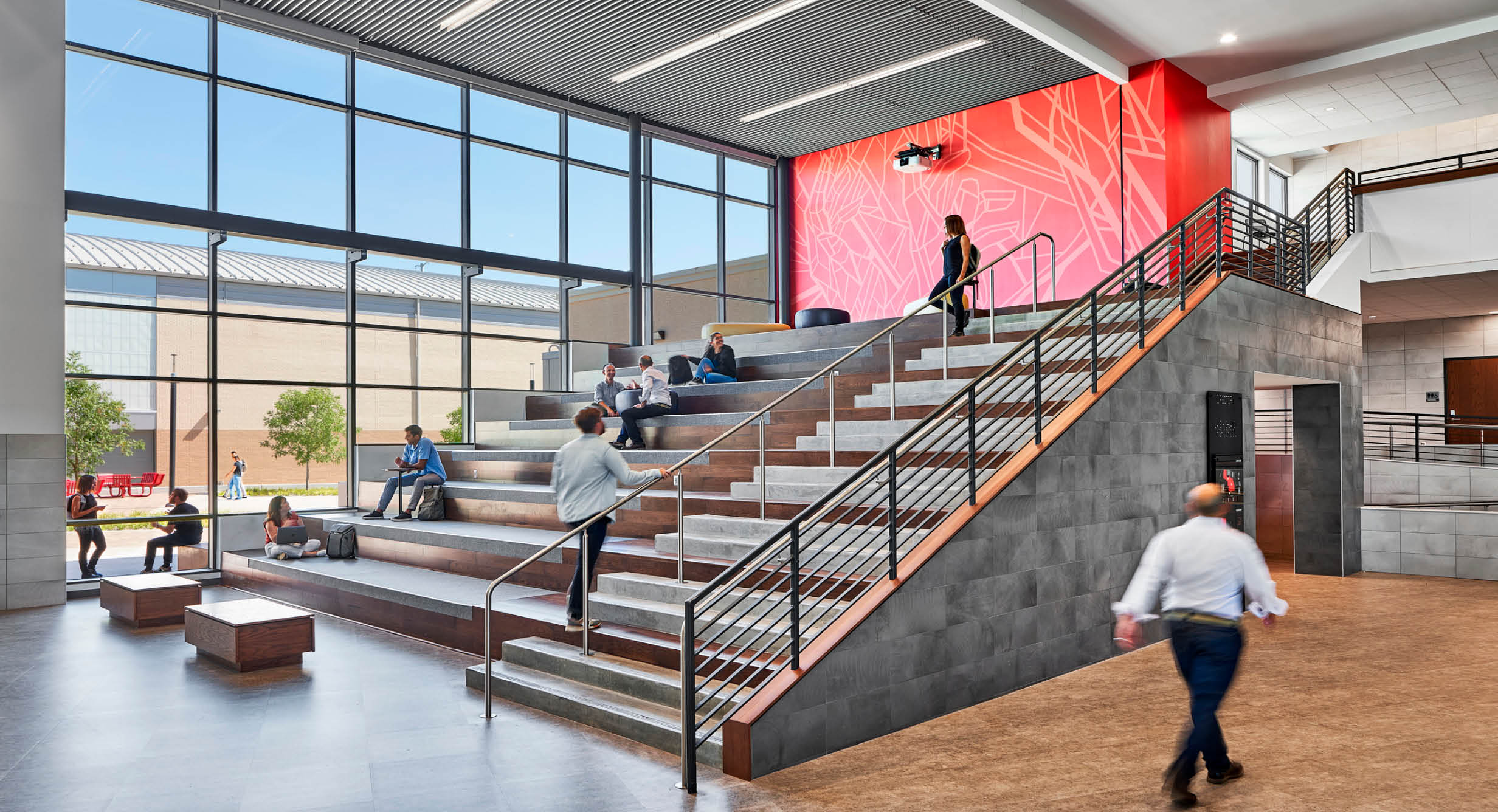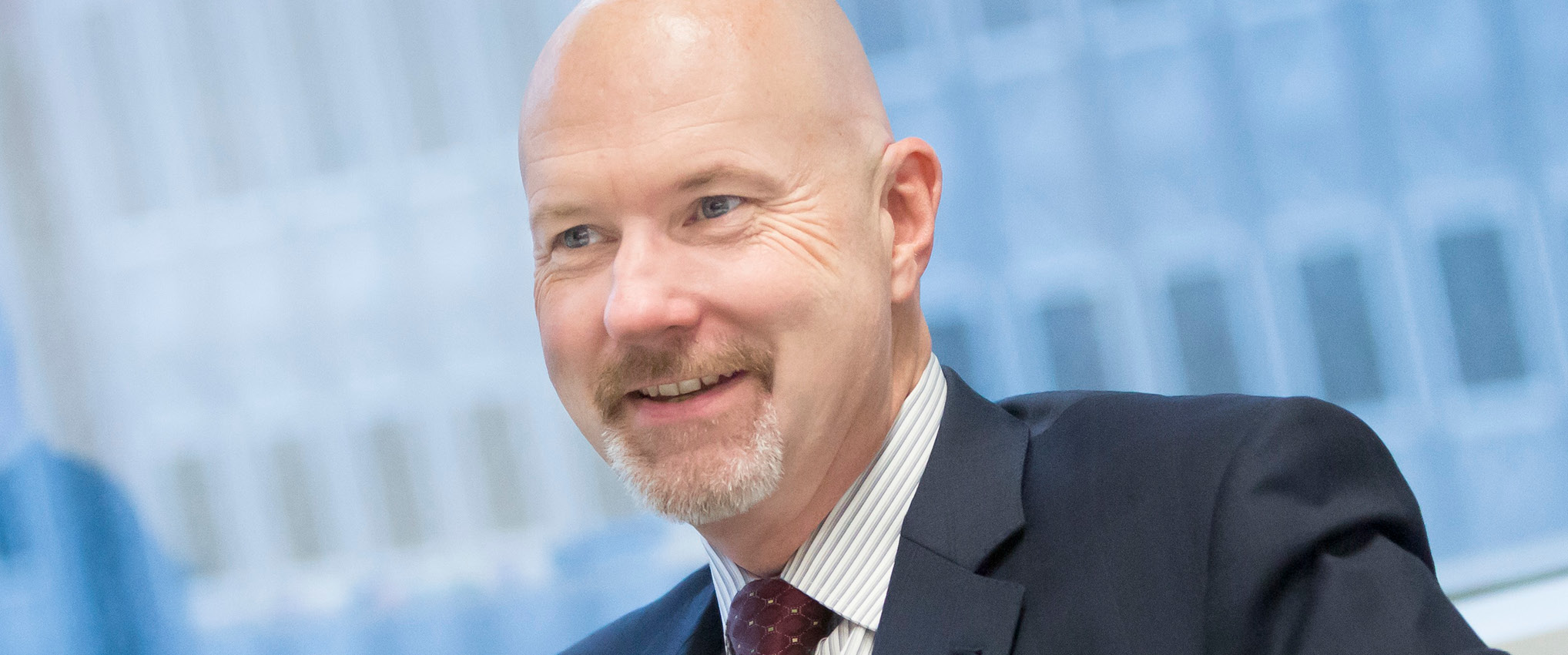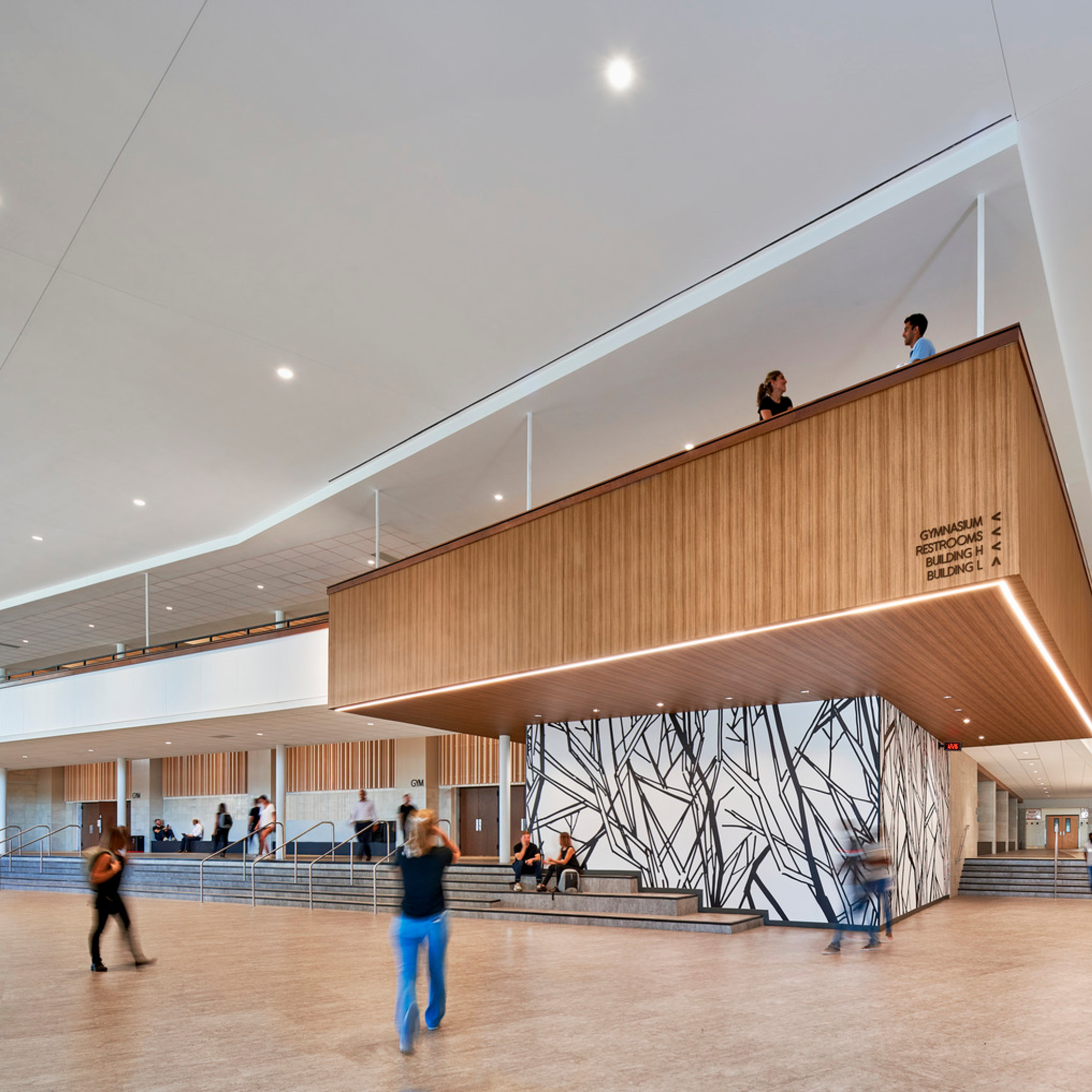
Thinking Outside the Checkbox: How HKS Teamed Up With a Dallas School to Connect Divided Campus
HKS was already helping the Richardson Independent School District respond to students’ need for more enrichment spaces when it was tapped to add 24 classrooms to a high school in a booming Dallas neighborhood.
The firm had recently completed prototypes for four multipurpose activity centers, including one at Lake Highlands High, the site of the classroom expansion. Richardson ISD asked HKS designers to gather input about where the additions should go by talking to a group of stakeholders that included students, campus staff, teachers and parents. The resulting insights from the community revealed an opportunity to go deeper than the planned classroom additions and design a heart for the once-fractured school.
“Many times, what this process uncovers is the cultural needs of a school community,” said Leonardo Gonzalez Sangri, a principal at HKS and director of the education group.
Many viewed the classroom addition as a chance to connect the main high school building with the former freshman center — a spine for a campus split in two by a fire lane. Yet HKS’ conversations with community members revealed other obstacles to school unity that wouldn’t be solved by linking the buildings with a block of classrooms or a corridor.
At Lake Highlands High, the duplicated rooms — cafeterias, libraries, science labs — led to unintentional student segregation and left teachers from the same departments stranded in opposite corners. Teens had no space outdoors to socialize. The complicated floor plans exacerbated the sense of disconnect by scattering administrators, counselors and support staff.
Over a series of meetings in 2018, the HKS team helped the Lake Highlands community group identify priorities for the school, eventually leading to a campus-unifying design that would give the district the most value for its budget.
The final plan adds the required number of classrooms but transforms the space between the academic buildings into a hub for the campus of 2,700 students. The Richardson ISD board praised the teamwork and the design, authorizing construction that is scheduled for completion in 2020.
“I can tell you this is the most exciting thing to happen to Lake Highlands High School in a long, long time,” trustee Karen Clardy said at a school board meeting.

Here to Listen
Waves of young families have flocked to the leafy Lake Highlands neighborhood in recent years, stretching the limits of elementary schools. That pressure would eventually build up at the high school unless Richardson ISD acted.
After voters approved bond funds for the classroom addition in 2016, the district assembled a committee of about 40 stakeholders — students, teachers, coaches, club sponsors, homeowners — who could provide insights about the campus. Until a few years ago, it had been a stand-alone freshman center and a grades 10-12 high school.
The design team sensed that some community members were initially skeptical about how influential they could be given that the bond program was specifically to build 24 classrooms.
But the skepticism soon turned into enthusiasm. At the first gathering, an HKS team of four architects, an interior designer and an education strategist divided the committee into smaller groups and took detailed notes about their conversations.
“We deliberately didn’t go in and start doing any drawings for the first two meetings,” Gonzalez Sangri said. “It was about listening and defining and getting at the root of the goals. What is this project really trying to do for this school?”

Campus Challenges
The HKS team designed activities to elicit meaningful feedback. Committee members were asked to imagine themselves five years into the future and write a postcard to their “2018 self” describing what they were most proud regarding the transformation of Lake Highlands High.
“That’s sort of when I knew HKS really cared,” said Colt Brock, an architecture major at the Georgia Institute of Technology who was a high school senior at the time of the meetings. “It wasn’t like they were just there to do their thing and leave.”
HKS architect O. Wayne Reynaud, the project manager, invited Brock and another student in a high school architectural class to share their ideas with the committee. The teens had firsthand knowledge of the challenges the student body faced navigating the campus.
For instance, the lack of a covered walkway between the former freshman center and the main building left students exposed to the elements during some of their passing periods.
Brock also noted that students clustered in one of three lunchrooms depending on their social group or the options for low-cost and free lunch.
“Up until my senior year I knew people who had never set foot in the [main] cafeteria during the lunch period,” he said.
Paths to Opportunity
HKS asked the committee to streamline its priorities. Colored markers in hand, three smaller groups separately outlined their ideas on plexiglass layered over a campus site plan.
Architects interpreted the markups and produced three clean diagrams. They regarded each of the plans individually and coalesced the ideas into a final scheme.
The hub was placed where the fire lane currently divides the academic buildings. There’s a single cafeteria within a commons area where students can eat lunch on the steps of a monumental staircase, in booths or in reading niches. One of the former cafeterias and adjacent hall space merged into a central library, and the other two cafeterias and an old library were repurposed into classrooms. Designers also carved out a courtyard between the school and the new multipurpose activity center north of the campus.
Though students may still split into their own cliques within the hub, they’ll have more opportunities to cross paths and interact with peers from other social groups.

Gonzalez Sangri and his colleagues hope to shrink income-based inequalities in education by designing schools that improve the way students learn and socialize. As a youngster, Gonzalez Sangri witnessed the effects of socioeconomic disparities in his native Mexico City, where he played on a soccer team. Although he was a private school student whose path to college was secure, some of his teammates aspired to a professional soccer career that they viewed as their only ticket out of poverty.
Reynaud, a longtime education architect from Louisiana, recalls his junior year in high school when he went before the Caddo Parish Schools board to be recognized for an architectural drafting award. The school board president called on his mom, a school bus driver, and smiled at her. He told her she’d done a good job.
“That’s what drives me when I get involved with a school district,” he said. “I think of whoever that kid is who needs that opportunity, just like I got mine.”
Richardson ISD board members thanked HKS for meaningfully involving the Lake Highlands community in the design instead of “throwing a wing on a school.”
“One of our teachers went on and on about how surprised she was that people were really listening, truly listening,” trustee Jean Bono said at a school board meeting.


